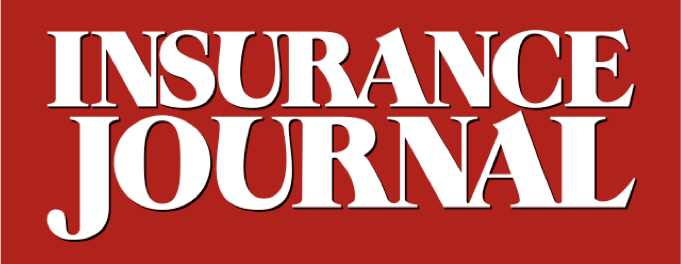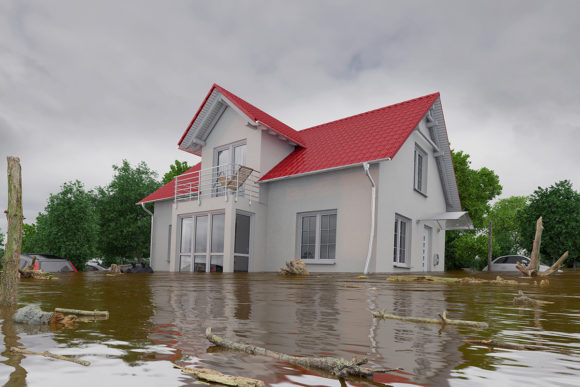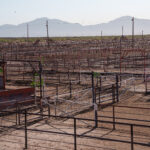An organization of state lawmakers is moving ahead toward adoption of a “model law” designed to encourage the sale of private flood insurance, even though insurers don’t think any new state laws are necessary and agents think the current draft would be too burdensome.
Tom Considine, executive director of the National Council of Insurance Legislators, said he expects an amended version of the model flood insurance act to be considered during the organization’s annual meeting in Austin Dec. 10-13.
Considine said most states do not allow private flood insurance to be sold as an admitted product, meaning consumers aren’t protected by state regulations governing details such as policy forms, rate approvals, and claims handling. He said a model law would provide a “regulatory framework” that might make the private flood market more attractive to reinsurers, making it easier for carriers to take on flood risks.
Congress has been grappling with how to make the National Flood Insurance Program pay for itself for decades. Legislation passed in 2012 was supposed to bring about more accurate rates, but Congress reversed itself and passed legislation limiting any premium increases. The authorization for the program expires in November.
Considine said from his perspective, it doesn’t make sense to use a federal program to provide the majority of the state’s flood insurance market. “To me, that doesn’t seem very American,” he said.
A Florida lawmaker — Rep. David Santiago, R-Deltona — pitched the idea of adding provisions to NCOIL’s Flood Disaster Mitigation and Relief Model Act. Santiago said during a meeting in March that about 100,000 policyholders have switched to private flood insurance after passage of reform legislation in 2015. The new law requires mortgage lenders to accept private flood insurance that is certified by the insurance department to be equivalent to the coverage offered through the federal program.
The Education Clause
Santiago and other private flood insurance advocates are now proposing a separate private flood insurance model law instead of an update to the larger disaster model act, Considine said. The effort has hit a speed bump.
During an NCOIL committee meeting on July 11, the Independent Insurance Agents & Brokers of America announced that it opposed the model law in current form because of language that would require insurance agents to educate consumers about the federal insurance program and that private coverage is an alternative.
IIABA General Counsel Wes Bissett said the proposed directive was “subjective and vague” and required agents to produce evidence that they discussed private flood insurance with their clients without giving any clear direction on how to do so.
Bissett noted that the Florida law doesn’t include a similar directive to agents.
Lisa Miller, a lobbyist in Tallahassee, Florida who represents insurers, said the drafters of the proposed model law are trying to improve on the Florida legislation, which was a first-blush attempt at passing substantial legislation. She said she thinks the language requiring agents to educate consumers is important and isn’t an undue burden.
“It’s not a burden, it’s a responsibility,” Miller said. “When 70% of those in Hurricane Harvey did not have flood insurance, something was missing. Would a conversation with homeowners have prevented that misery?”
Miller noted that insurance brokers commissions of 20% or more commission on National Flood Insurance Program policies they sell, while private carriers generally pay about 10%. She said that incentive is another reason it makes sense to require agents to make consumers aware that private coverage is an alternative.
Bisett, during a telephone interview, countered that agents will earn more if the number of flood insurance policies sold increases, regardless of whether the policies come from private carriers or through the national program. And he said the commissions paid by the flood program aren’t as good as they look at first blush because much of the premium collected consists of fees for which no commission is paid.
Bissett pointed to testimony by his organization and other agents groups in 2017 before a Congressional subcommittee housing and insurance: The trade organizations said its research found commissions for federal flood insurance averaged 18% in 2016 and 2017. Because of the fees, those were collected on 50% to 75% of the policy face value. A survey of agents found that private carriers selling flood insurance as a surplus line paid commissions of 10% to 15%, the trade groups said in a joint statement.
The argument over the education cause may be mute, at least for now. Considine said his “gut instinct” tells him that the language will be removed from the next draft of the model act. Considine said as a former regulator — he was once New Jersey’s insurance and banking commissioner — he thinks the language “probably should change.”
“It’s really burdensome. I say that as a regulator,” he said. “As a lawyer, I say it’s overbroad and vague.”
Commissions and Premiums
John Dickson, chief executive officer of Aon Edge, said if private flood insurance takes off, the amount of the commissions paid won’t matter that much. His company is a managing general agent that sells flood insurance as a stand-alone policy.
He said some policyholders would be unable to qualify for a mortgage if they had to pay the price of federal flood insurance, which means the policy would never be sold.
“The solutions we are providing, we are able to get people to satisfy their loan rates because they can save $1,000 bucks on their flood insurance policy,” he said.
Dickson said carriers that sell through the Aon Edge program pay commissions ranging from 10% to 17% for private flood insurance, depending on the performance of the book of business and other factors. By comparison, he said he’s heard rumors of 24% commissions paid through the federal program. Then again, that isn’t a percentage of the full policy amount.
Dickson said he understands why advocates are pushing for more education, but he’s also not surprised that insurance agents are resisting any new mandates.
Dickson said from his point of view, the adoption of a model state law by NCOIL would be a “good step forward.”
While a model state law is “part of the puzzle,” Dickson said the Federal Emergency Management Agency could boost the number of properties covered by flood insurance by dropping a policy that prohibits policyholders who leave the program to come back in later at what the government calls a “subsidized rate.”
“FEMA’s approach to flood insurance has been to protect what is written under the NFIP today rather than think about how we can expand flood insurance,” he said.
The federal program, of course, is outside of NCOIL’s purview. And while some advocates for private flood market are hoping a model act for state legislatures to enact will provide a push, insurers were decidedly unexcited during the July 11 committee meeting.
Insurers Not Seeking
In written comments submitted last October, the American Insurance Association, National Association of Mutual Insurance Companies and the Property Casualty Insurers Association of America said that “the vast majority of our members are not seeking a national legislative model to foster entry into the private flood market.”
Paul Martin, southwest regional director for NAMIC, made more supportive comments during the July 11 meeting. He said it was a good decision to move forward with a model law, but he also said that the states appear to be moving along fine without one.
Martin said a report by the National Association of Insurance Commissioners found a 140% growth in the number of companies writing private flood insurance. However, he also pointed out double-digit rate increases in several states: 18% in Texas, 15% in Louisiana, 12% in North Dakota, and 11% in Virginia.
For its part, the federal government says it welcomes more competition in the flood peril market.
David Maurstad, chief executive of the National Flood Insurance Program, told the NCOIL disaster relief committee in March that FEMA has established a “moonshot” goal of doubling flood insurance coverage by 2022.
Maurstad said both the federal program and the private market must grow to reach that goal. He said now, only 4% of U.S. residents have flood insurance and only 40% of residents in high-hazard areas.
“That statistic is concerning given that we know the risk of flooding affects almost every corner of the nation and that every state and 98% of the counties have experienced a flooding event,” he said, according to minutes of the meeting.
Topics Carriers Agencies Legislation Florida Flood Training Development
Was this article valuable?
Here are more articles you may enjoy.



 More US Beef Plants May Close as Cattle Herds Keep Tightening
More US Beef Plants May Close as Cattle Herds Keep Tightening  Former CEO of Nonprofit P/C Statistical Agent Sentenced for Stealing Millions
Former CEO of Nonprofit P/C Statistical Agent Sentenced for Stealing Millions  Three Top P/C Insurers Account for Most of Insurance AI Patents
Three Top P/C Insurers Account for Most of Insurance AI Patents  NTSB Unclear Who Was at Controls in Jet Crash That Killed Biffle and 6 Others
NTSB Unclear Who Was at Controls in Jet Crash That Killed Biffle and 6 Others 

